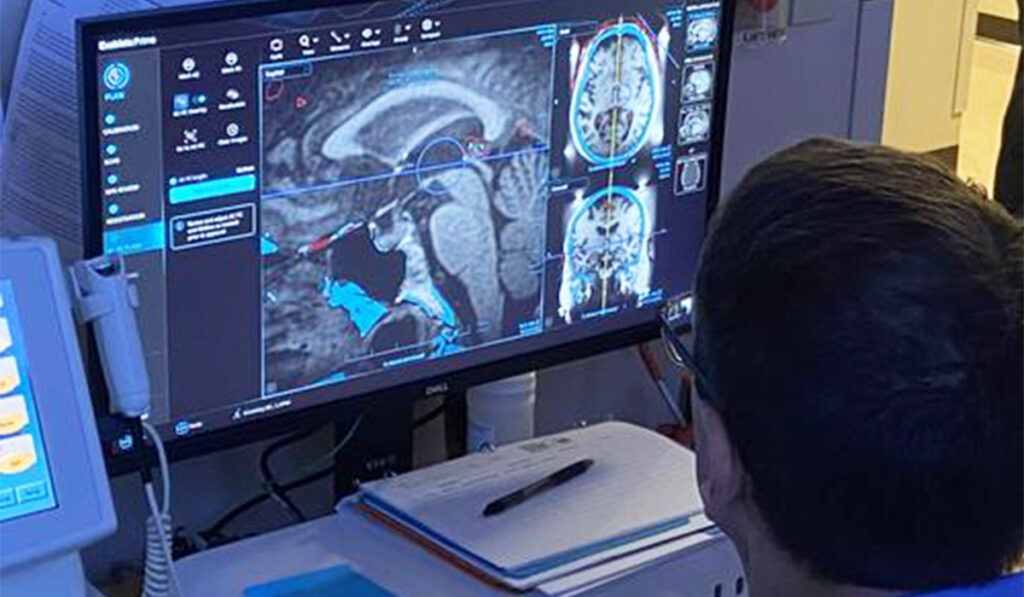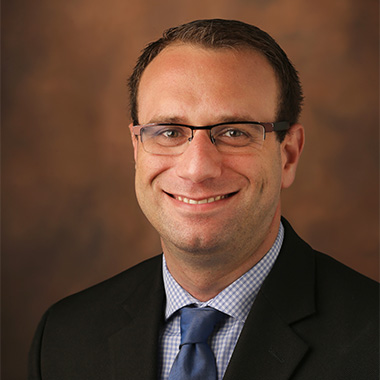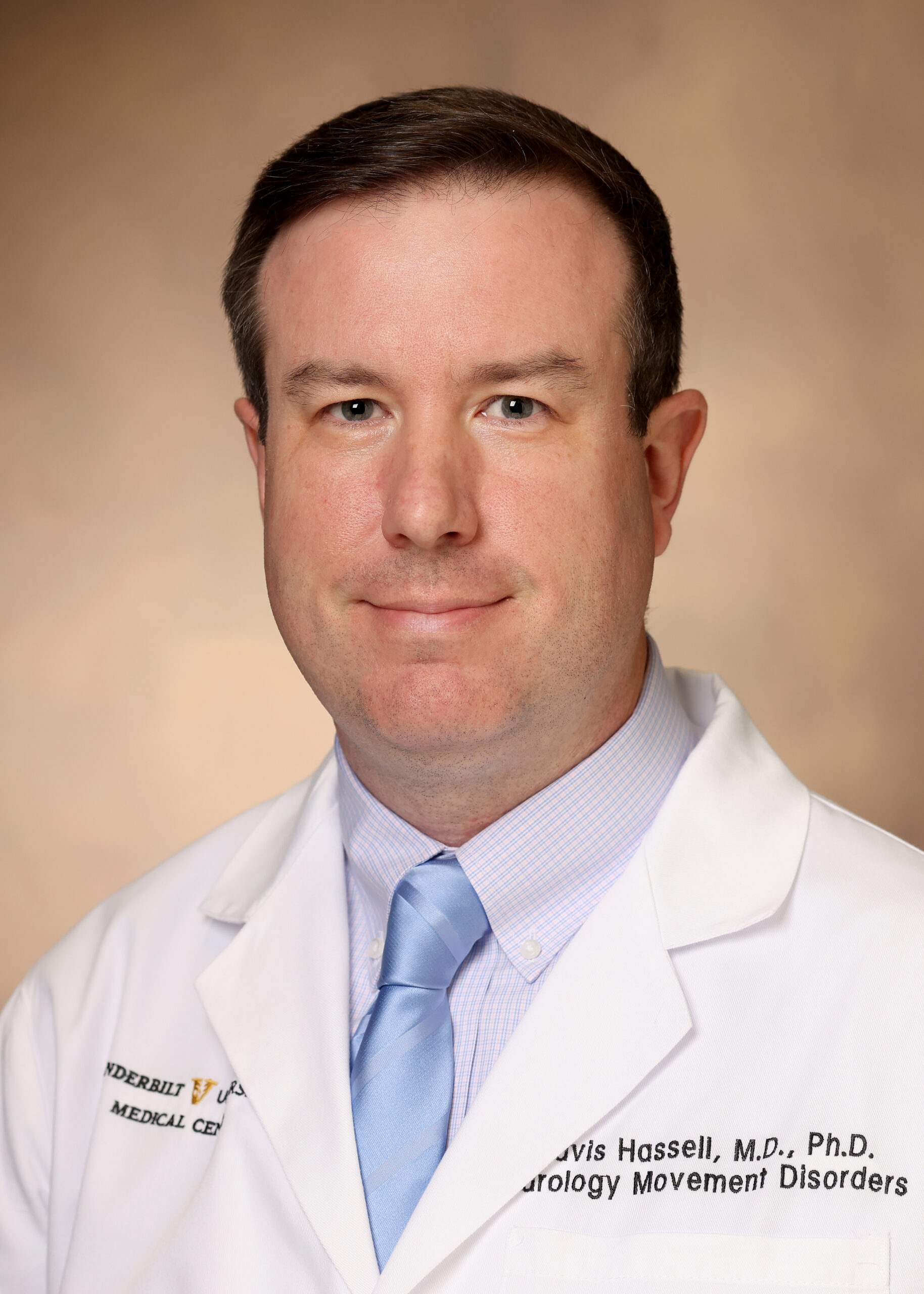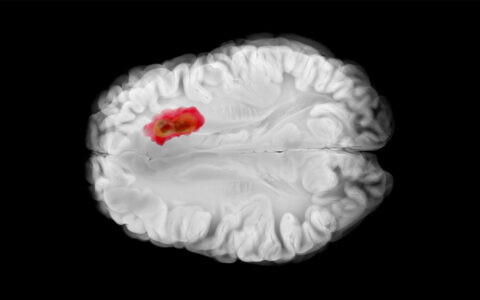Vanderbilt University Medical Center, one of the three highest volume centers in the United States to offer advanced movement-disorder procedures, has successfully completed its first focused ultrasound treatments of patients with Parkinson’s tremor.
Focused ultrasound is FDA-approved for essential tremor and, more recently, for medication-refractory tremor in Parkinson’s disease, offering a noninvasive, potentially one-time outpatient treatment with a short recovery time.
“We are excited to be using the latest version of this technology, which enables the patient to spend less time in the scanner and, most importantly, allows us better visualization for more accurate targeting of the area we want to treat,” said Dario Englot, M.D., Ph.D., director of functional surgery and associate professor of neurological surgery at Vanderbilt. “We are one of few centers in the country with this newest system.”
MRI Thermometry
In this ablative therapy, magnetic resonance thermometry enables real-time visualization of a low-intensity ultrasound beam delivered inside the brain. Using patient feedback to determine when the tremor movement is affected by the ultrasound, the neurosurgeons shift to a high intensity beam to ablate the area with submillimeter accuracy.
Neurologist Travis Hassell, M.D., Ph.D., clinical director of the Deep Brain Stimulation and Focused Ultrasound Program, leads the training of 14 movement-disorder neurologists and oversees the focused ultrasound procedures, during which they work side-by-side with neurosurgeons.
“The surgeon creates a small lesion in a precise spot of the brain while protecting the healthy, surrounding tissue,” Hassell explained. “Since it requires no anesthesia, the patient is awake. This allows us to test for improvement of symptoms throughout the procedure.”
The areas targeted for essential tremor and Parkinson’s tremor are the same ones that are stimulated in deep brain stimulation, one of the other available treatments for tremor along with stereotactic radiofrequency ablation.
“The target is in the thalamus for essential tremor and in the globus pallidus for Parkinson’s disease, though we can also target the thalamus for patients with severe tremor-dominant Parkinson’s,” Englot explained.
This outpatient procedure takes about 90 minutes and patients leave the same day, with instructions to avoid strenuous activity or driving for the first one to two weeks to assure that they recover normal balance and mobility.
“There are no incisions to heal or keep clean or concerns for bleeding, so the recovery time is much quicker than with invasive procedures,” Englot said. “Focused ultrasound also has some benefits in its level of precision, due to the particular navigation system we use. Fortunately, complications are very rare with this procedure.”
The Coffee Test
The goal is to have a one-time treatment for each side of the body, in a staged fashion, starting with either the dominant side or the patient’s most impacted side. After nine months, the other side may be treated. In some unusual cases in which the lesion was not adequate treated, the first side might be retreated.
To date, the team says focused ultrasound procedures are producing an immediate reduction in tremor symptoms, as hoped.
“We had a text message from a patient the next morning saying he was able to drink his coffee for the first time in years,” Hassell said. “He was so happy about that.”
He cautions that the treatment doesn’t stop disease progression in Parkinson’s, though it helps improve the symptoms by affecting brain circuits. Some patients may need to come back for ongoing treatment.
No Shortage of Applications
Englot says that the size and comprehensive nature of the movement-disorder program at Vanderbilt offers patients a soup-to-nuts experience in one clinic. In addition to the neurologists, patients will see neuropsychologists and other specialists for evaluation and follow-up.
The clinic has a unique level of collaboration with basic science researchers and engineers at Vanderbilt who are working toward the next generation of this technology and other focused ultrasound applications.
“Besides the potential clinical benefits of the newer technology, the work we do here opens the door to broad research on brain circuitry to help us address a myriad of pathologies,” Englot said.
Other symptoms of neurodegenerative diseases such as dystonia, stiffness and slowness of movement may be targets. Even chorea, which has been treated with some success through deep brain stimulation, may be on the research horizon as an MRI thermometry application.
Other disorders being explored with focused ultrasound treatment include Tourette’s syndrome and epilepsy, a disorder in which Englot has pioneered deep brain stimulation procedures, published extensively on brain circuitry and trained neurosurgeons on resections and laser ablation procedures.
“We also see that lower intensity ultrasound treatments are being explored for opening the blood-brain barrier to treat Alzheimer’s and for treating addiction and substance use,” Englot said. “So there are a lot of potential avenues for exploring this technology for different disorders.”





